January 12, 1957
John Alan Lasseter (/ˈlæsətər/ LASS-ə-tər; born January 12, 1957) is an American film director, producer, screenwriter, and animator. He was previously the chief creative officer of Pixar Animation Studios, Walt Disney Animation Studios, and Disneytoon Studios, as well as the Principal Creative Advisor for Walt Disney Imagineering, and has served as the head of animation at Skydance Animation since 2019.
January 12, 1957
John Alan Lasseter was born on January 12, 1957, in Hollywood, California. His mother, Jewell Mae (née Risley; 1918–2005), was an art teacher at Bell Gardens High School, and his father, Paul Eual Lasseter (1924–2011), was a parts manager at a Chevrolet dealership.
1975
Lasseter heard of a new character animation program at the California Institute of the Arts (often abbreviated as 'CalArts') and decided to follow his dream of becoming an animator. His mother further encouraged him to take up a career in animation, and, after graduating from Whittier High School in 1975, he enrolled as the second student (Jerry Rees was the first) in the CalArts Character Animation program created by Disney animators Jack Hannah and T. Hee. Lasseter was taught by three members of Disney's Nine Old Men team of veteran animators—Eric Larson, Frank Thomas and Ollie Johnston—and his classmates included future animators and directors like Brad Bird, John Musker, Henry Selick, Tim Burton, and Chris Buck. During his time there, he produced two animated shorts—Lady and the Lamp (1979) and Nitemare (1980)—which each won the student Academy Award for Animation.
1979
Upon graduating in 1979, Lasseter immediately obtained a job as an animator at Walt Disney Productions mostly due to his success with his student project, Lady and the Lamp. The studio had reviewed approximately 10,000 portfolios in the late 1970s in search of talent, then selected only about 150 candidates as apprentices, of which only about 45 were kept on permanently. In the fall of 1979, Disney animator Mel Shaw told the Los Angeles Times that "John's got an instinctive feel for character and movement and shows every indication of blossoming here at our studios ... In time, he'll make a fine contribution." At that same time, Lasseter worked on a sequence titled "The Emperor and the Nightingale" (based on The Nightingale by Hans Christian Andersen) for a Disney project called Musicana. Musicana was never released but eventually led to the development of Fantasia 2000 (1999).
1981
Lasseter is a close friend and admirer of Japanese animator Hayao Miyazaki, whom he first met when TMS Entertainment sent a delegation of animators to the Disney studio in 1981 and showed a clip from Miyazaki's first feature film, The Castle of Cagliostro (1979). Lasseter was so deeply moved that in 1985 he insisted on showing that clip and other examples of Miyazaki's work after dinner to a woman he had just met (who would become his wife). He visited Miyazaki during his first trip to Japan in 1987 and saw drawings for My Neighbor Totoro (1988). After Lasseter became a successful director and producer at Pixar, he went on to serve as executive producer on several of Miyazaki's films for their release in the United States and oversaw the translation and dubbing of their English language soundtracks. In addition, the forest spirit Totoro from My Neighbor Totoro makes an appearance as a plush toy in Toy Story 3 (2010).
November 1983
While putting together a crew for the planned feature, Lasseter had made some contacts in the computer industry, among them Alvy Ray Smith and Ed Catmull at Lucasfilm Computer Graphics Group. After being fired, and feeling glum knowing his employment with Disney was to end shortly, Lasseter visited a computer graphics conference in November 1983 at the Queen Mary in Long Beach, where he met and talked to Catmull again. Catmull inquired about The Brave Little Toaster, which Lasseter explained had been shelved. From his experience at Lucasfilm, Catmull assumed Lasseter was simply between projects since Hollywood studios have traditionally laid off employees when they lack enough productions to keep them busy. Still devastated at being forced out of the only company he had ever wanted to work for, Lasseter could not find the strength to tell Catmull that he had been fired.
December 1983
Catmull later telephoned Smith that day and mentioned that Lasseter was not working at Disney. Smith told Catmull to put down the phone and hire Lasseter right away. Lasseter agreed instantly to work freelance with Catmull and his colleagues and joined them for a week of December 1983 on a project that resulted in their first computer-animated short: The Adventures of André & Wally B., meant to prove it was possible to do character animation on a computer. After his work on the Where the Wild Things Are-test, Lasseter assumed hand-drawn characters in a CGI environment was the only way, but Catmull insisted it could be done, it was just that nobody had given it an attempt before. Because Catmull was not allowed to hire animators, he was given the title "Interface Designer"; "Nobody knew what that was but they didn't question it in budget meetings". Lasseter spent a lot of time at Lucasfilm in the San Francisco Bay Area in the spring of 1984, where he worked together closely with Catmull and his team of computer science researchers. Lasseter learned how to use some of their software, and in turn, he taught the computer scientists about filmmaking, animation, and art. The short turned out to be more revolutionary than Lasseter first had visualized before he came to Lucasfilm. His original idea had been to create only the backgrounds on computers, but in the final short everything was computer-animated, including the characters.
January 1984
Lasseter and his colleagues unknowingly stepped on some of their direct superiors' toes by circumventing them in their enthusiasm to get the Where the Wild Things Are project into motion. The project was canceled while being pitched to two of Lasseter's supervisors, animation administrator Ed Hansen, and head of Disney studios, Ron W. Miller, due to lack of perceived cost benefits for the mix of traditional and computer animation. A few minutes after the meeting, Lasseter was summoned by Hansen to his office. As Lasseter recalled, Hansen told him, "Well, John, your project is now complete, so your employment with the Disney Studios is now terminated." Wilhite, who was part of Disney's live-action group and therefore had no obligations to the animation studio, was able to arrange to keep Lasseter around temporarily until the Wild Things test project was complete in January 1984, but with the understanding there would be no further work for Lasseter at Disney Animation. The Brave Little Toaster would later become a 2D animated feature film directed by one of Lasseter's friends, Jerry Rees, and co-produced by Wilhite (who had, by then, left to start Hyperion Pictures), and some of the staff of Pixar would be involved in the film alongside Lasseter.
October 1984
After the short CGI film was presented at SIGGRAPH in the summer of 1984, Lasseter returned to Los Angeles with the hope of directing The Brave Little Toaster at Hyperion Pictures. He soon learned that funding had fallen through and called Catmull with the bad news. Catmull called back with a job offer, and Lasseter joined Lucasfilm as a full-time employee in October 1984 and moved to the Bay Area. After that, he worked with ILM on the special effects on Young Sherlock Holmes, where he made the first fully computer-generated photorealistic animated character, a knight composed of elements from a stained glass window. This effect was the first CGI character to be scanned and painted directly onto film using a laser. Lasseter and Catmull's collaboration, which has since lasted over thirty years, would ultimately result in Toy Story (1995), which was the first-ever computer-animated feature film. Additionally, Lasseter created THX's robot mascot Tex. He made his first appearance in 1996 with the original theatrical release of Independence Day. Since then, Tex has appeared in some THX trailers.
1985
Lasseter lives in Glen Ellen, California, with his wife Nancy, a graduate of Carnegie Mellon University, whom he met at a computer graphics conference in San Francisco in 1985. Nancy majored in computer graphics applications, and previously worked as a computer graphics engineer at Apple Computer. They married in 1988, and have four sons together in addition to Nancy's son from a previous relationship, born between 1979 or 1980 and 1997.
1986
Due to George Lucas's financially crippling divorce, he was forced to sell off Lucasfilm Computer Graphics, by this time renamed the Pixar Graphics Group, founded by Smith and Catmull, with Lasseter as one of the founding employees. It was spun off as a separate corporation with Apple co-founder Steve Jobs as its majority shareholder in 1986. Over the next 10 years, Pixar evolved from a computer company that did animation work on the side into an animation studio. Lasseter oversaw all of Pixar's films and associated projects as executive producer. As well as Toy Story, he also personally directed A Bug's Life (1998), Toy Story 2 (1999), Cars (2006), and Cars 2 (2011).
1986
Lasseter began his career as an animator with The Walt Disney Company. After being fired from Disney for promoting computer animation, he joined Lucasfilm, where he worked on then-ground breaking usage of CGI animation. The Graphics Group of the Computer Division of Lucasfilm was sold to Steve Jobs and became Pixar in 1986. Lasseter oversaw all of Pixar's films and associated projects. He personally directed Toy Story (1995), A Bug's Life (1998), Toy Story 2 (1999), Cars (2006), and Cars 2 (2011), and executive-produced all other Pixar films through 2018. From 2006 to 2018, Lasseter also oversaw all of Walt Disney Animation Studios' (and its division Disneytoon Studios') films and associated projects as executive producer.
January 2006
Disney announced that it would be purchasing Pixar in January 2006, and Lasseter was named the chief creative officer of both Pixar and Walt Disney Feature Animation, the latter of which he renamed Walt Disney Animation Studios. Lasseter was also named principal creative adviser at Walt Disney Imagineering, where he helped design attractions for Disney Parks. He oversaw all of Walt Disney Animation Studios' films and associated projects as executive producer. He reported directly to Disney Chairman and CEO Bob Iger, bypassing Disney's studio and theme park executives. He also received green-light power on films with Roy E. Disney's consent.
December 2006
In December 2006, Lasseter announced that Disney Animation would start producing animated shorts – 2D, CGI, or a combination of both – that would be released theatrically. Lasseter said he sees this medium as an excellent way to train and discover new talent in the company as well as a testing ground for new techniques and ideas.
June 2007
In June 2007, Catmull and Lasseter were given control of Disneytoon Studios, a division of Walt Disney Animation Studios housed in a separate facility in Glendale. As president and chief creative officer, respectively, they have supervised three separate studios for Disney, each with its own production pipeline: Pixar, Disney Animation, and Disneytoon. While Disney Animation and Disneytoon are located in the Los Angeles area, Pixar is located over 350 miles (563 kilometers) northwest in the Bay Area, where Catmull and Lasseter both live. Accordingly, they appointed a general manager for each studio to manage day-to-day business affairs, then established a routine of spending at least two days per week (usually Tuesdays and Wednesdays) in Southern California.
2008
He has won two Academy Awards, for Animated Short Film (Tin Toy), as well as a Special Achievement Award (Toy Story). Lasseter has been nominated on four other occasions—in the category of Animated Feature, for both Monsters, Inc. (2001) and Cars, in the Original Screenplay category for Toy Story and in the Animated Short category for Luxo, Jr. (1986)—while the short Knick Knack (1989) was selected by Terry Gilliam as one of the ten best animated films of all time. In 2008, he was honored with the Winsor McCay Award, the lifetime achievement award for animators.
May 02, 2009
On May 2, 2009, Lasseter received an honorary doctorate from Pepperdine University, where he delivered the commencement address.
2011
Lasseter received a star on the Hollywood Walk of Fame in Hollywood in 2011, located at 6834 Hollywood Boulevard.
2017
On January 9, 2019, Lasseter was hired to head Skydance Animation, a new animation division of Skydance Media formed in 2017. In a statement, Lasseter said "I have spent the last year away from the industry in deep reflection, learning how my actions unintentionally made colleagues uncomfortable, which I deeply regret and apologize for. It has been humbling, but I believe it will make me a better leader." An investigation conducted prior to his hiring found that no previous claims of sexual assault, propositioning or harassment had been filed against Lasseter, and "[...] there were no findings of secret settlements by Disney or Lasseter to any parties asking for a settlement." In his role at Skydance, Lasseter serves as producer on all feature films and executive producer on all series, along with Skydance Media CEO David Ellison.
November 2017
In November 2017, Lasseter took a six-month leave of absence after being made aware of interactions he had with employees that made them uncomfortable, and subsequently apologized and acknowledged said interactions as "missteps" in a memo to staff. Lasseter went on in the memo to emphasize his commitment to fixing his missteps and his hope to return to working with them in the new year. The alleged sexual misconduct toward multiple employees over a number of years included "grabbing, kissing, [and] making comments about physical attributes". The behavior was alleged to have been so well-known that, according to Variety, at various times, Pixar had "minders who were tasked with reining in his impulses".
November 2017
In November 2017, Lasseter took a six-month sabbatical from Pixar and Disney Animation after being made aware of interactions with employees that made them uncomfortable, and subsequently apologizing and acknowledging the interactions as "missteps". According to various news outlets, Lasseter had a history of alleged sexual misconduct toward employees. In June 2018, it was announced that he would be leaving the company at the end of the year when his contract expired; he took on a consulting role until then. Following his departure from Disney and Pixar, Lasseter was later hired by Skydance founder and CEO David Ellison to run the animation division Skydance Animation.
June 2018
In June 2018, Disney and Lasseter announced that he would be leaving the company at the end of the year, taking a consulting role until then.
August 09, 2022
Critical, public and commercial reception to films Lasseter has directed as of August 9, 2022.
Trending

55 minutes ago Sergio Ramos's Monterrey faces crucial Liga MX Play-In match against Pumas. Ramos may be out.

55 minutes ago Devin Booker and Molly Murphy spark dating rumors at Stagecoach 2025.
55 minutes ago Seth's Sacrifice and Keleher's Exit: 'The Rookie' Season 7 Shocks!
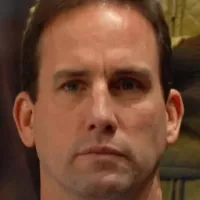
55 minutes ago Jets Defeat Blues in Game 7 After Scheifele Injury; Lowry Scores in 2OT
2 hours ago Braves Bolster Pitching Depth by Signing Austin Cox and Assigning Him to Triple-A
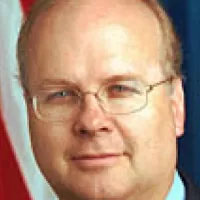
2 hours ago Karl Rove analyzes Trump's falling approval, economic concerns, and potential voter regrets.
Popular
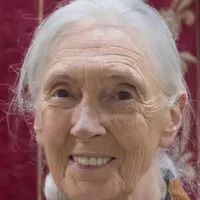
Jane Goodall is a renowned English primatologist zoologist and anthropologist...
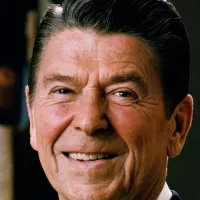
Ronald Reagan the th U S President - was a...
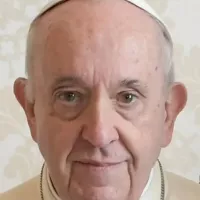
Pope Francis is the current head of the Catholic Church...
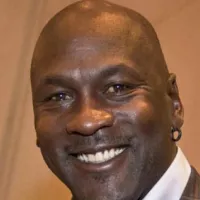
Michael Jordan also known as MJ is an American businessman...

Cristiano Ronaldo often nicknamed CR is a highly decorated Portuguese...
The Real ID Act of is a US federal law...